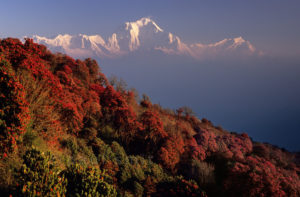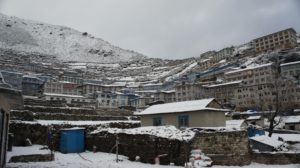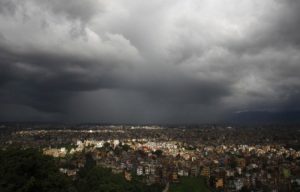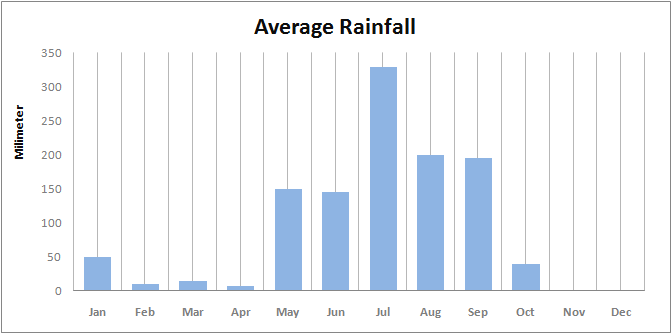Climate
Nepal resides at the same latitude as the Florida, however, the differing altitudes and geography affects the weathers and climates of each regions.
- The Southern plains or Terai has a tropical climate. The altitude, lesser than 1,000 meters, brings in a tropical weather, therefore, it’s lush with vegetation and ever-green forests. It’s popularly known as the bread basket of Nepal.
- As the altitude increases, the weather starts differing. The middle hills, which fall between 1,000 meters and 2,000 meters, have a sub-tropical weather and occupies about 22% of the entire land mass. Kathmandu falls under the sub-tropical altitudinal belt.
- The upper hills account for temperate climate. It occupies 12% of Nepal’s land mass and has up to 153 annual days of frost.
- The higher altitude, up to 4,000 meters accounts for the sub-alpine climate. It’s mostly found in the lower Himalaya regions. The human settlement and vegetation is scare in this very climate. Annapurna Base Camp is a part of sub-alpine altitudinal belt.
- The region above 4,000 meters is known as the alpine zone. Even though the human settlement is scare above 4,000 meters, some areas tend to have permanent settlers. They mostly depend on trading of goods for food, as the altitude cannot support any form of vegetation, except few medicinal herbs. Everest Base Camp is a part of alpine altitudinal belt.
Precipitation
Season
Nepal has four major seasons. The influx of tourists totally depends upon the very seasons. Spring and Autumn are regarded as the best season for the arrival of tourists. They receive almost 80% of the total tourists in a year.
#1 Spring

It is one of the best times for traveling in Nepal. The rhododendrons are in full blossom, with excellent trails and clear blue sky. Visibility is near to perfect. It brings in second highest number of tourists in a year.
It makes some of your favorite trek trails completely accessible. Everest, Annapurna, Manaslu and Langtang are few of them.
Spring in nepal lasts from March to June.
#2 Autumn

It is another best season of Nepal. A historically important season, the weather remains perfect. Visibility, temperature and weather is likely to make you fall in love with the mountains. It brings in the highest amount of tourists in a year.
The popular trek trails, such as; Everest Base Camp, Annapurna circuit and the base camp, remain busier.
Annapurna region receives over 100,000 tourists during Autumn, while Everest may receive well over 60,000 tourists.
Autumn lasts from September to early November.
#3 Winter

Winter is a fairly good time for traveling in Nepal. The visibility is fine, however, the issue of cold weather persists.
The average temperature of Kathmandu may fall well below 9°C (48°F). You can still trek around the Nepal, however, prepare yourself better for the harsh weather at the higher altitudes.
Snowfall is common in the mountains. You must carry extra layers or sleeping bags during the winter. Winter lasts from Mid-November to February.
#4 Monsoon/Summer

Monsoon is basically gloomy and dull in Nepal. The incessant rainfall can be a huge problem for the travelers. You can still go around trekking if you can deal with the weather, however, you must be cautious of the likely natural calamities in the hilly and mountain regions. Landslides are quite a common site.
The rain-shadow areas, however, remain well away from the monsoon. It is actually the best time to visit the rain-shadow areas in Nepal, such as; Upper Mustang, Dolpo and Muktinath. Monsoon lasts from July to late August.
